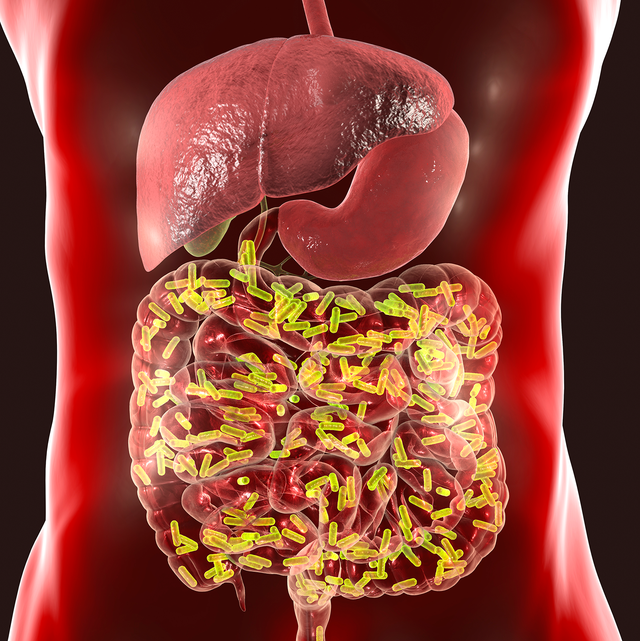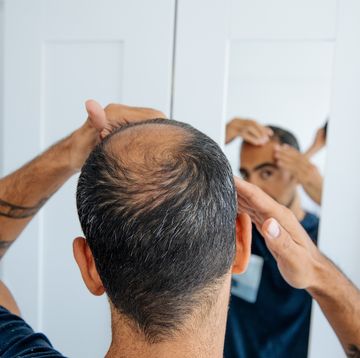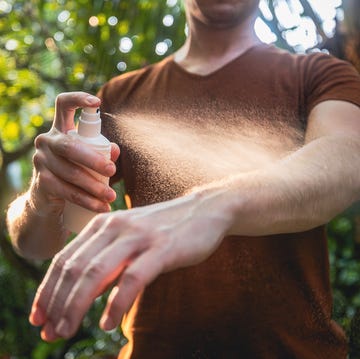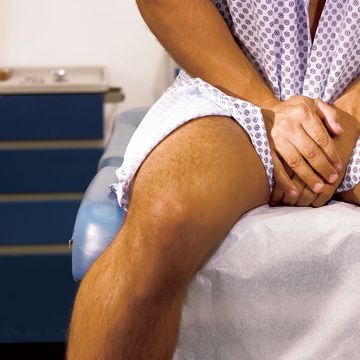WHEN YOU EAT, tiny living things—400 to 500 different species of microbes—chow down, too. How happy they are with their diet is vital to everything from your immune system to your mood. They have a lot of responsibility; so do you. Good thing science is here to help.
What Do Microbes Even Do?
Protect Your Gut
"Our bodies are quite clever,” says Jack Gilbert, Ph.D., a microbiologist at UC San Diego and the director of the Microbiome and Metagenomics Center. Enzymes our bodies make help us digest what we’re able to, then we rely on microbes—mainly bacteria in the colon—to digest the rest. Like you, microbes “poop” out by-products they can’t process. Depending on what they’re eating, these by-products can cause gas and other issues, or their “waste” can be useful things like vitamins B and K. An out-of-whack microbial mix is linked to common digestive ailments as well as Crohn’s disease and ulcerative colitis.
Stabilize Your Mood
The gut is packed with nerves that talk to your brain along the “gut-brain axis,” says nutritional psychiatrist Uma Naidoo, M.D., author of Calm Your Mind with Food. If you’ve had butterflies in your stomach (gut) because you were nervous (brain), it makes sense. It goes the other way, too: Gut microbes can trigger feel-good signals to the brain.
Help Your Immune System
When GI-tract microbes produce compounds like short-chain fatty acids, they help preserve the layers of tissue and mucus that provide resistance to infections. And as your immune system—70 percent of which is in the gut—interacts with your microbes, it learns how to respond to disease-producing invaders elsewhere in the body. Beneficial microbes may also help dampen the inflammatory response that’s at the root of many diseases.
How Should You Feed Your Gut Microbes?
YOUR PERSONAL MICROBIAL mix is shaped both by factors you can’t control—genes, the circumstances of your birth (natural or C-section)—and by factors you can. Everyone is unique, but in general, your diet can make a huge difference in how the microbes behave.
Eat More
Fermented foods
Yogurt, sauerkraut, kimchi—all contain living microbes, aka probiotics. Their benefits are threefold: “You get the food itself, the bacteria that come with the food, and the healthy things that the bacteria produce,” says Keith Summa, M.D., Ph.D., at Northwestern University’s Feinberg School of Medicine. “That would be prebiotic, probiotic, and postbiotic.”
Fiber
This nutrient, a prebiotic, is what your microbes eat. They especially adore soluble fiber, found in grains like oats and barley, beans, and fruits including apples and citrus. Just know that for some people, more microbial feasting can mean more gas and bloating, says Dr. Summa.
Produce
To diversify your microbiome, eat a variety of plants, says Gilbert. He recommends aiming for 30 different types of produce per week. Sounds ambitious, but even a basic sandwich can contain four: lettuce, tomato, onion, and the grain in the bread. Don’t stress—just go for variety.
Eat Fewer
Ultra-processed foods
Processed foods high in saturated fats or added sugars, like sausages and cookies—all the boogeymen of what Gilbert calls the “Standard American Diet” (note the initials)—tend to promote the growth of bad bacteria in the body. These bacteria poop out things that make us feel worse, not better. Scientists think that in some cases bad bacteria cause inflammation that stimulates the hypothalamic-pituitary-adrenal axis to produce cortisol and adrenaline, contributing to a state of constant anxiety.
What About All Those $upplement$$$?
AS WITH FOODS, supplements can contain prebiotics, probiotics, or postbiotics. (You’ll also see synbiotics, which combine pre- and probiotics.) They’re substitutes—for instance, instead of eating high-fiber foods, you take a psyllium supplement.
Two things on probiotic supplements: First, they’re unregulated by the FDA, so there’s no way to know if one will work, or if it contains what it says it does (unless the contents are verified by a third party such as USP, NSF, or Informed Choice).
Second, most of them contain the same few strains of bacteria, which have become standards not necessarily because they have therapeutic value but because they are easy to culture and commercialize. And according to Dr. Summa, everyone’s body is so different that it doesn’t really make sense to try to treat an ailment with one specific strain of bacteria. But if someone wants to take a probiotic for their symptoms, then he usually recommends trying a reputable product for two to four weeks to see if it helps.
What Else Affects Your Gut Microbes?
Known to Help
A daily routine
The intestines have their own circadian rhythm, and a regular schedule of eating helps keep them on their usual cycle (and happy).
Exercise
A workout creates hormones your microbes love. It also activates your immune system, which helps regulate your microbiome.
Sleep
More sleep is associated with increased microbial diversity.
Might Help
Fecal transplants
These are FDA approved for potentially deadly C. difficile infections, but better delivery methods are on the way.
Doesn’t Help
Alcohol
Microbes are used to make beer and wine, but the products you drink don’t contain them. In fact, alcohol may kill bacteria inside you.
Antibiotics
These kill the microbes that are making you sick, but they also wipe out good ones in the process.
Stress
High stress levels mean increased cortisol and adrenaline, and both hormones are tied to bad bacteria in the body.
How Probiotics Actually Help You
THERE'S A COMMON misconception that when you consume a probiotic, its living microbes end up in your gut. Except that there’s a stomach full of deadly acid in between your mouth and your intestines, where most microbes live. According to Gilbert, what really happens is that your immune system sees the living things you’ve eaten and then reacts, changing the immune condition throughout the body. Healthy stuff tends to dial in the immune system so that your gut allows good microbes to flourish.
A version of this story appeared in the March/April 2024 issue of Men's Health.













